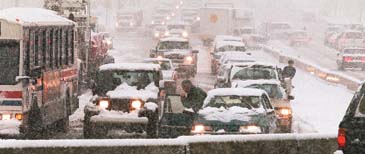.............................
|
| 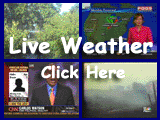 NOAA Weather Radio Broadcast

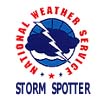



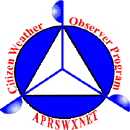
 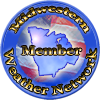
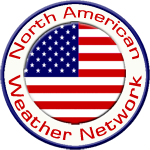 Thank You.

| 
Storms with Strong WindsSometimes winter storms are accompanied by strong winds creating blizzard conditions with blinding wind-driven snow, severe drifting, and dangerous wind chill. Strong winds with these intense storms and cold fronts can knock down trees, utility poles, and power lines. Storms near the coast can cause coastal flooding and beach erosion as well as sink ships at sea. In the West and Alaska, winds descending off the mountains can gust to 100 mph or more damaging roofs and other structures. Extreme ColdExtreme cold often accompanies a winter storm or is left in its wake. Prolonged exposure to the cold can cause frostbite or hypothermia and become life-threatening. Infants and elderly people are most susceptible. What constitutes extreme cold and its effect varies across different areas of the United States. In areas unaccustomed to winter weather, near freezing temperatures are considered "extreme cold." Freezing temperatures can cause severe damage to citrus fruit crops and other vegetation. Pipes may freeze and burst in homes that are poorly insulated or without heat. In the north, below zero temperatures may be considered as "extreme cold." Long cold spells can cause rivers to freeze, disrupting shipping. Ice jams may form and lead to flooding. Ice StormsHeavy accumulations of ice can bring down trees, electrical wires, telephone poles and lines, and communication towers. Communications and power can be disrupted for days while utility companies work to repair the extensive damage. Even small accumulations of ice may cause extreme hazards to motorists and pedestrians. Heavy Snow StormsHeavy snow can immobilize a region and paralyze a city, stranding commuters, stopping the flow of supplies, and disrupting emergency and medical services. Accumulations of snow can collapse buildings and knock down trees and power lines. In rural areas, homes and farms may be isolated for days, and unprotected livestock may be lost. In the mountains, heavy snow can lead to avalanches. The cost of snow removal, repairing damages, and loss of business can have large economic impacts on cities and towns. 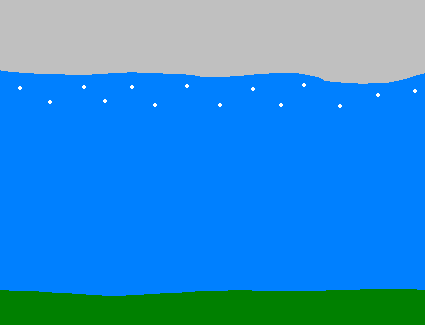
SnowFLURRIES
- Light snow falling for short durations. No accumulation or light dusting
is all that is expected. SleetRain drops that freeze into ice pellets before reaching
the ground. Sleet usually bounces when hitting a surface and does not stick
to objects. However, it can accumulate like snow and cause a hazard to motorists. Freezing RainRain that falls onto a surface with a temperature below
freezing. This causes it to freeze to surfaces, such as trees, cars, and
roads, forming a coating or glaze of ice. Even small accumulations of ice
can cause a significant hazard. From the Mid-Atlantic Coast to New England...The classic storm is called a Nor'easter. A low pressure area off the Carolina coast strengthens and moves north. Wind-driven waves batter the coast from Virginia to Maine, causing flooding and severe beach erosion. The storm taps the Atlantic's moisture-supply and dumps heavy snow over a densely populated region. The snow and wind may combine into blizzard conditions and form deep drifts paralyzing the region. Ice storms are also a problem. Mountains, such as the Appalachians, act as a barrier to cold air trapping it in the valleys and adjacent low elevations. Warm air and moisture moves over the cold, trapped air. Rain falls from the warm layer onto a cold surface below becoming ice. Along the Gulf Coast and Southeast...This region is generally unaccustomed to snow, ice, and freezing temperatures. Once in a while, cold air penetrates south across Texas and Florida, into the Gulf of Mexico. Temperatures fall below freezing killing tender vegetation, such as flowering plants and the citrus fruit crop. Wet snow and ice rapidly accumulate on trees with leaves, causing the branches to snap under the load. Motorists are generally unaccustomed to driving on slick roads and traffic accidents increase. Some buildings are poorly insulated or lack heat altogether. Local municipalities may not have available snow removal equipment or treatments, such as sand or salt, for icy roads. In the Midwest and Plains...Storms tend to develop over southeast Colorado in the lee of the Rockies. These storms move east or northeast and use both the southward plunge of cold air from Canada and the northward flow of moisture from the Gulf of Mexico to produce heavy snow and sometimes blizzard conditions. Other storms affecting the Midwest and Plains intensify in the lee of the Canadian Rockies and move southeast. Arctic air is drawn from the north and moves south across the Plains and Great Lakes. Wind and cold sometimes combine to cause wind chill temperatures as low as 70F below zero. The wind crosses the lakes, tapping its moisture and forming snow squalls and narrow heavy snow bands. This is called "lake-effect snow." From the Rockies to the West Coast...Strong storms crossing the North Pacific sometimes slam into the coast from California to Washington. The vast Pacific provides an unlimited source of moisture for the storm. If cold enough, snow falls over Washington and Oregon and sometimes even in California. As the moisture rises into the mountains, heavy snow closes the mountain passes and can cause avalanches. The cold air from the north has to filter through mountain canyons into the basins and valleys to the south. If the cold air is deep enough, it can spill over the mountain ridge. As the air funnels through canyons and over ridges, wind speeds can reach 100 mph, damaging roofs and taking down power and telephone lines. Combining these winds with snow results in a blizzard. In Alaska...Wind-driven
waves from intense storms crossing the Bering Sea produce coastal flooding
and can drive large chunks of sea ice inland destroying buildings near the
shore. High winds, especially across Alaska's Arctic coast, can combine
with loose snow to produce a blinding blizzard and wind chill temperatures
to 90F below zero! Extreme cold (-40F to -60F) and ice fog may last a week
at a time. Heavy snow can impact the interior and is common along the southern
coast. With only brief glimpses of the winter sun across the southern horizon,
the snow accumulates through the winter months. In the mountains, it builds
glaciers, but the heavy snow accumulations can also cause avalanches or
collapse roofs of buildings. A quick thaw means certain flooding. Ice jams
on rivers can also cause substantial flooding.
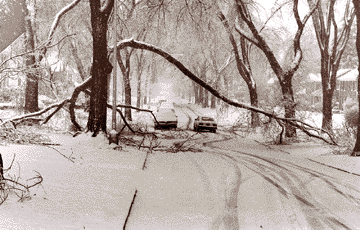
Winter DeathsEveryone is potentially at risk during winter storms. The actual threat to you depends on your specific situation. Recent observations indicate the following:
Frostbite is damage to body tissue caused by that tissue
being frozen. Frostbite causes a loss of feeling and a white or pale appearance
in extremities, such as fingers, toes, ear lobes, or the tip of the nose.
If symptoms are detected, get medical help immediately! If you must wait
for help, slowly rewarm affected areas. However, if the person is also showing
signs of hypothermia, warm the body core before the extremities.
When CAUGHT in a Winter Storm... OUTSIDE
Find shelter: No shelter: Do not eat snow: It will lower your body temperature. Melt it first. IN A CAR OR TRUCK
Stay in your car or truck. Disorientation occurs quickly
in wind-driven snow and cold. Make yourself visible to rescuers: Exercise from time to time by vigorously moving arms, legs, fingers, and toes to keep blood circulating and to keep warm. AT HOME OR IN A BUILDING
Stay inside. When using ALTERNATIVE HEAT from a fireplace, wood stove, space heater, etc.: No heat: Eat and drink. Food provides the body with energy for
producing its own heat. Keep the body replenished with fluids to prevent
dehydration.
WINTER STORM WATCH: Severe winter conditions, such as heavy snow and/or ice, are possible within the next day or two. Prepare now! WINTER STORM WARNING: Severe winter conditions have begun or are about to begin in your area. Stay indoors! BLIZZARD WARNING: Snow and strong winds will combine to produce a blinding snow (near zero visibility), deep drifts, and life-threatening wind chill. Seek refuge immediately! WINTER WEATHER ADVISORY: Winter weather conditions are expected to cause significant inconveniences and may be hazardous. If caution is exercised, these situations should not become life- threatening. The greatest hazard is often to motorists. FROST/FREEZE WARNING: Below freezing temperatures are expected and may cause significant damage to plants, crops, or fruit trees. In areas unaccustomed to freezing temperatures, people who have homes without heat need to take added precautions.
Primary concerns are the potential loss of heat, power, telephone service, and a shortage of supplies if storm conditions continue for more than a day. Have available:
On the farm...
U.S. DEPARTMENT OF COMMERCE National Oceanic and Atmospheric Administration National Weather Service Warning and Forecast Branch November 1991
| |||||
|---|---|---|---|---|---|---|---|

